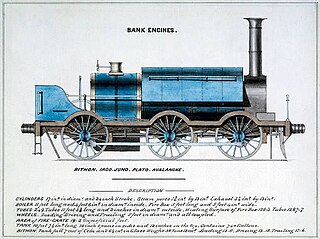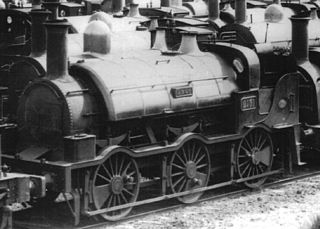Four ships of the Royal Navy have been named HMS Bellerophon after the hero Bellerophon in Greek mythology, whilst another two were planned:

The first Locomotives of the Great Western Railway (GWR) were specified by Isambard Kingdom Brunel but Daniel Gooch was soon appointed as the railway's Locomotive Superintendent. He designed several different 7 ft 1⁄4 in broad gauge types for the growing railway, such as the Firefly and later Iron Duke Class 2-2-2s. In 1864 Gooch was succeeded by Joseph Armstrong who brought his standard gauge experience to the workshops at Swindon. To replace some of the earlier locomotives, he put broad gauge wheels on his standard gauge locomotives and from this time on all locomotives were given numbers, including the broad gauge ones that had previously carried just names.
Bellerophon is a hero in Greek mythology.

The Great Western Railway (GWR) Star Class of 2-2-2 broad gauge steam locomotives were used for passenger train work. Designed by Robert Stephenson, the class was introduced into service between November 1838 and November 1841, and withdrawn between April 1864 and September 1871.

The Banking Class were five 0-6-0ST Brunel gauge steam locomotives for assisting ("banking") trains up inclines on the Great Western Railway. Designed by Daniel Gooch, they were tank engine versions of his Standard Goods class, and mainly built at Swindon Works.

The Great Western Railway Pyracmon Class were 0-6-0 broad gauge steam locomotives for goods train work. This class was introduced into service between November 1847 and April 1848, and withdrawn between August 1871 and December 1873. Bacchus was added to the class in May 1849, having been constructed to broadly the same design from spare parts.

The Great Western Railway Metropolitan Class2-4-0T broad gauge steam locomotives with condensing apparatus were used for working trains on the Metropolitan Railway. The equipment was later removed, though the class continued to work suburban trains on GWR lines in London. The class was introduced into service between June 1862 and October 1864, and withdrawn between June 1871 and December 1877.

The Great Western Railway Prince Class 2-2-2 broad gauge steam locomotives for passenger train work. This class was introduced into service between August 1846 and March 1847, and withdrawn between January and September 1870.

The Great Western Railway Iron Duke Class 4-2-2 was a class of 7 ft 1⁄4 in broad gauge steam locomotives for express passenger train work.
The Great Western Railway Hawthorn Class were 2-4-0 broad gauge steam locomotives for passenger train work. This class was introduced into service in 1865, a development of the Victoria Class.

The Firefly was a class of broad gauge 2-2-2 steam locomotives used for passenger services on the Great Western Railway. The class was introduced into service between March 1840 and December 1842, and withdrawn between December 1863 and July 1879.

The Great Western Railway Sun Class were 2-2-2 broad gauge steam locomotives for passenger train work. This class was introduced into service between April 1840 and January 1842, and withdrawn between January 1864 and June 1879.

The eight Dido class locomotives were 0-6-0ST broad gauge locomotives operated on the South Devon Railway and Cornwall Railway and associated other adjacent railways. They were designed for goods trains but were also used on passenger trains when required.

The Bristol and Exeter Railway locomotives worked trains on the Bristol and Exeter Railway from 1 May 1849 until the railway was amalgamated with the Great Western Railway on 1 January 1876.

The Hercules Class were four broad gauge steam locomotives for the Great Western Railway. They were the first 0-6-0 locomotives, being built in 1842 by Nasmyth, Gaskell and Company.

The first 19 locomotives ordered by Isambard Kingdom Brunel for the Great Western Railway included six 2-2-2 Mather, Dixon locomotives. They were built by Mather, Dixon and Company, but were unsuccessful, and were rapidly replaced by the Star Class locomotives ordered by Daniel Gooch, once he had been appointed as the Locomotive Engineer.
The GWR 378 Class was a class of 30 standard-gauge 2-2-2 steam locomotives on the Great Western Railway in Britain. They were introduced in 1866, and the class remained intact until 1898. Several were altered to the 0-6-0 wheel arrangement, and the last was withdrawn from service in 1920.
Locomotives named Ajax have included:













